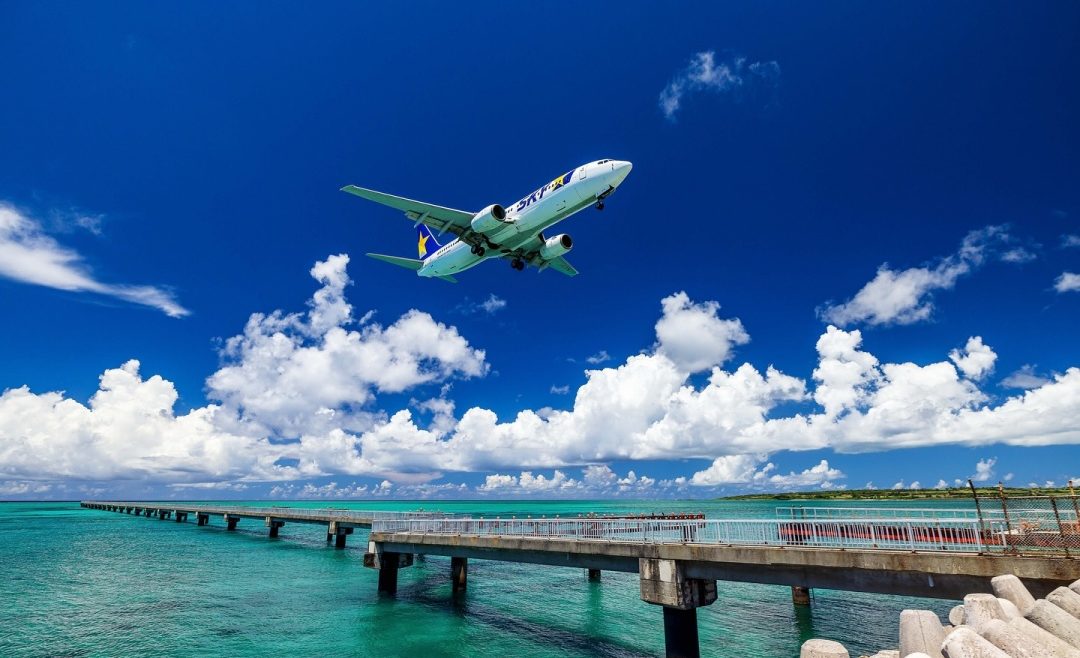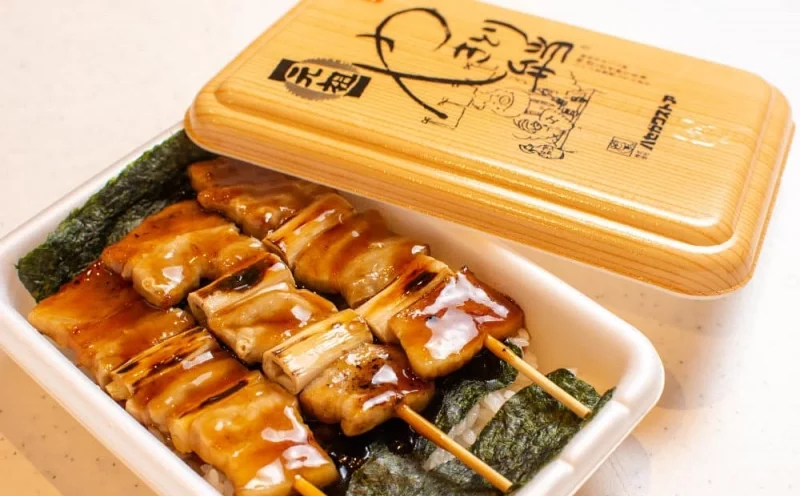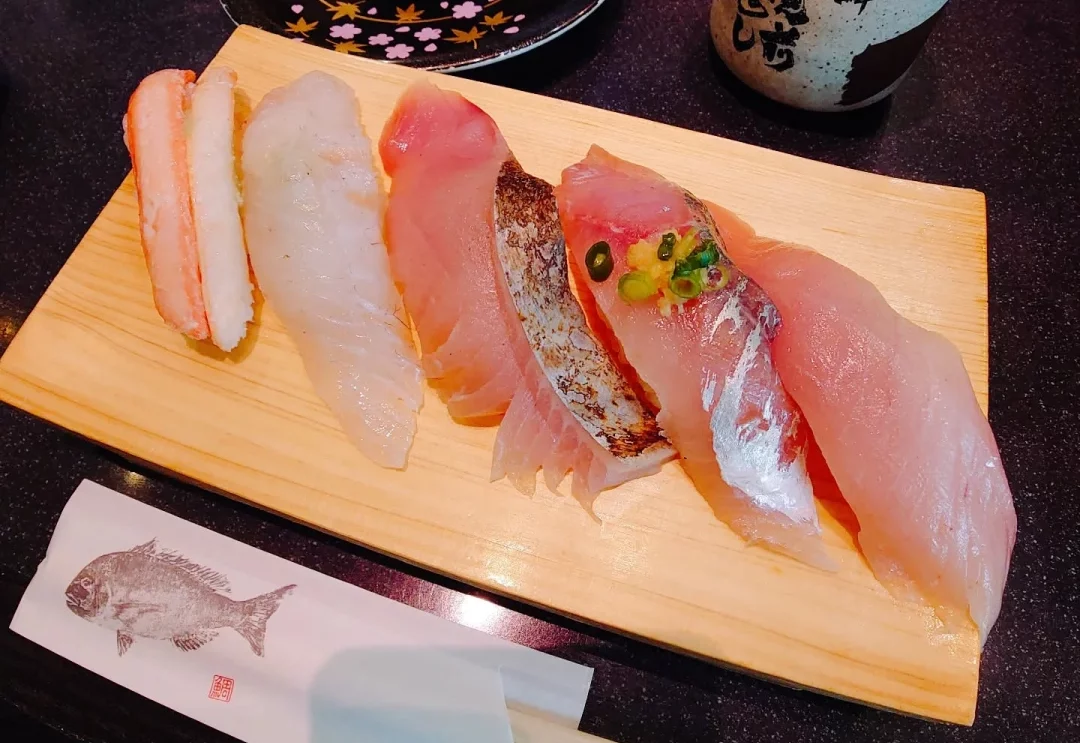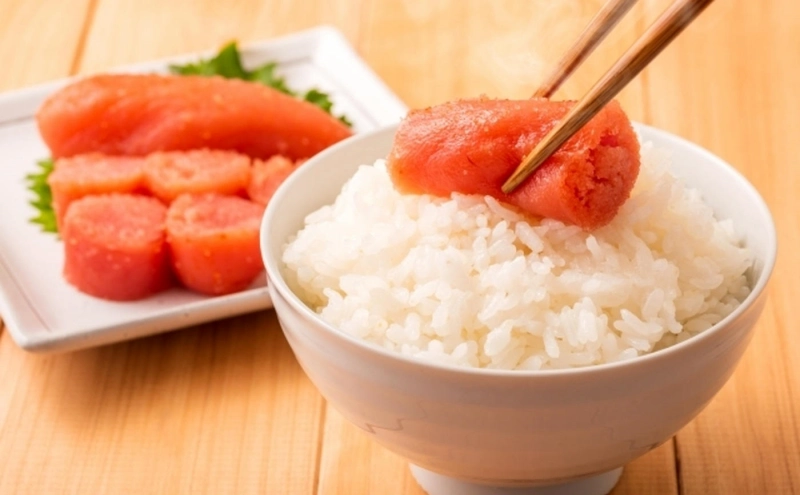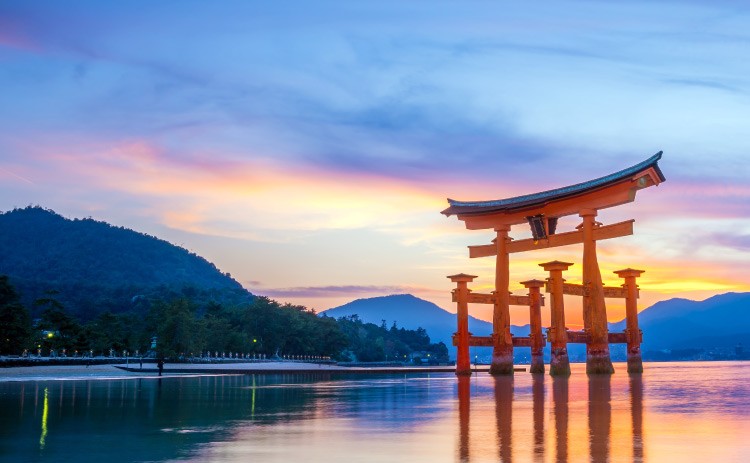Last year, cherry blossoms bloomed earlier than usual across Japan, with some famous spots shedding petals even before reaching full bloom. This year, many regions from Kanto to western areas are expected to have a near-normal bloom timing, while areas in Hokuriku and northern Japan are predicted to bloom earlier than usual. Therefore, if you haven't planned your cherry blossom viewing yet, it's advisable to consider doing so now.
This time, we will introduce cherry blossom viewing spots in Japan based on information from the "Cherry Blossom Channel" operated by Weather News, listing 1,100 cherry blossom sites in Japan in order of the number of cherry trees.
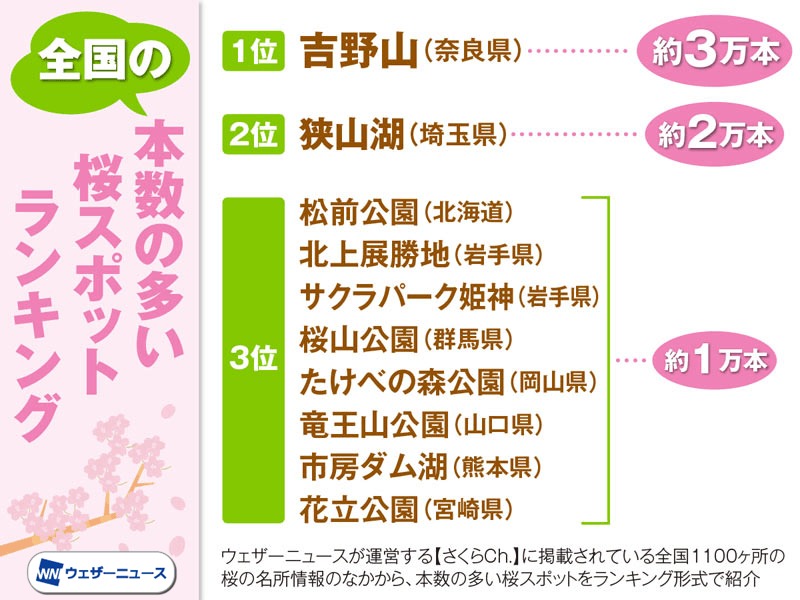
1st Place: Mount Yoshino (Nara Prefecture) with approximately 30,000 trees
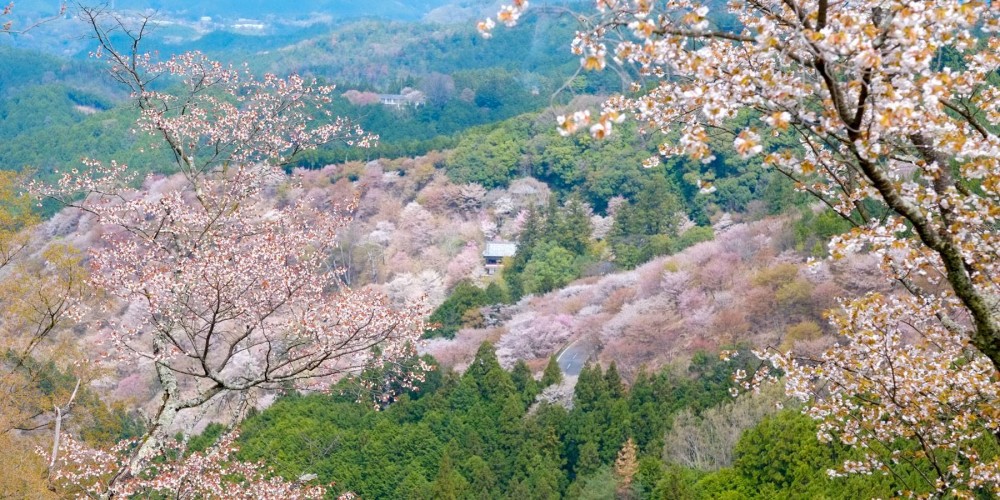
"When you think of Yoshino, you think of cherry blossoms; when you think of cherry blossoms, you think of Yoshino." Mount Yoshino, home to the World Cultural Heritage site Kinpusenji Temple, has been a renowned cherry blossom viewing spot since ancient times. Many historical figures like Emperor Shomu and Toyotomi Hideyoshi have visited Yoshino for its cherry blossoms.
Around 30,000 cherry trees dot the valleys and ridges, a result of the region's ancient mountain worship. Legend has it that the founder of Shugendo, En no Ozunu, carved the statue of Kongosatta, a protective deity, on a cherry tree here for worship. The cherry trees are revered as sacred, continually planted and protected. In spring, cherry blossoms bloom from the lower Chiben, creating a spectacular view.
Due to its lower altitude, the entire mountain blooms, including Naka-senbon, Kami-senbon, and Oku-senbon.
Cherry Blossom Type: Jozan Sakura
Number of Trees: Approximately 30,000
Illumination: Available
Crowd Level: Weekdays = Slightly crowded, Holidays = Crowded
2nd Place: Lake Sayama (Saitama Prefecture) with 20,000 trees
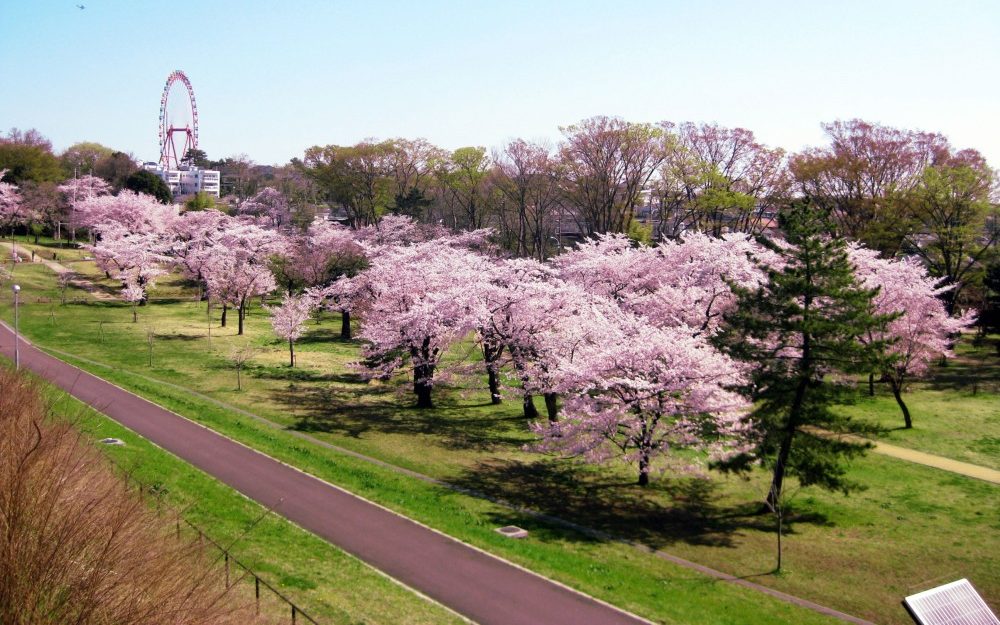
Around the lakeshore are approximately 20,000 cherry trees, making it a famous cherry blossom viewing spot. Lake Sayama, officially known as "Yamaguchi Reservoir," was built as a dam lake for water storage for Tokyo.
The surrounding Sayama Hills are part of the Sayama Prefectural Nature Park and serve as a recreational area for locals, offering activities like birdwatching. It's a beautiful dam lake selected as one of the "Top 100 Dam Lakes" and one of the "100 Natural Sites to be Protected in Japan in the 21st Century."
In spring, you can enjoy cherry blossoms along the 700-meter-long embankment, attracting numerous visitors from within and outside the prefecture with its beautiful lake and cherry blossoms in full bloom.
Cherry Blossom Type: Somei Yoshino
Number of Trees: Approximately 20,000
Illumination: Not available
Crowd Level: Weekdays = Spacious, Holidays = Slightly crowded
3rd Place: Matsumae Park (Hokkaido) with approximately 10,000 trees
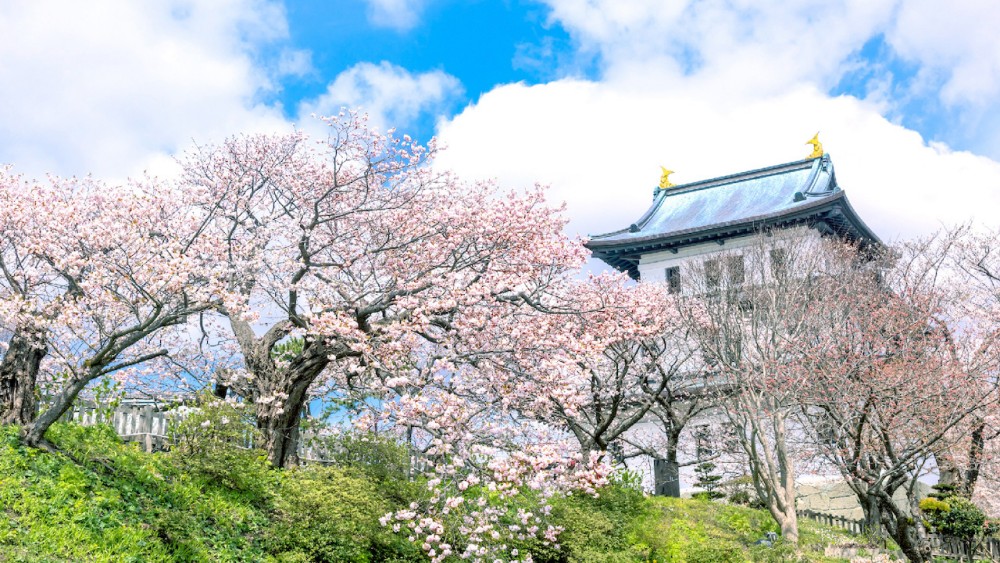
Matsumae Park is a large park featuring Matsumae Castle, temple streets, and the Matsumae Clan's residence, all symbolic of Matsumae. It is said that around 10,000 cherry trees were brought from Kyoto by feudal lords' wives during the Edo period and planted by merchants and samurai on the three gold flakes.
The Keimai Sakura tree located inside the Komaizan Temple is said to be over 300 years old, making it a venerable tree. It is also the parent tree of the representative cherry blossom variety in Matsumae called "Nashiki." Additionally, you can admire cherry blossoms like the "Ezo Kasumi-zakura" at the Ryuun-in Temple and the "Meoto Sakura" at the Tenjin Slope Gate, along with the "Cherry Blossom Sample Garden."
Cherry Blossom Types: Nanadan, Somei Yoshino
Number of Trees: Approximately 10,000
Illumination: Available
Crowd Level: Weekdays = Slightly crowded, Holidays = Very crowded
3rd Place: Kitakami Tenshokai (Iwate Prefecture) with approximately 10,000 trees
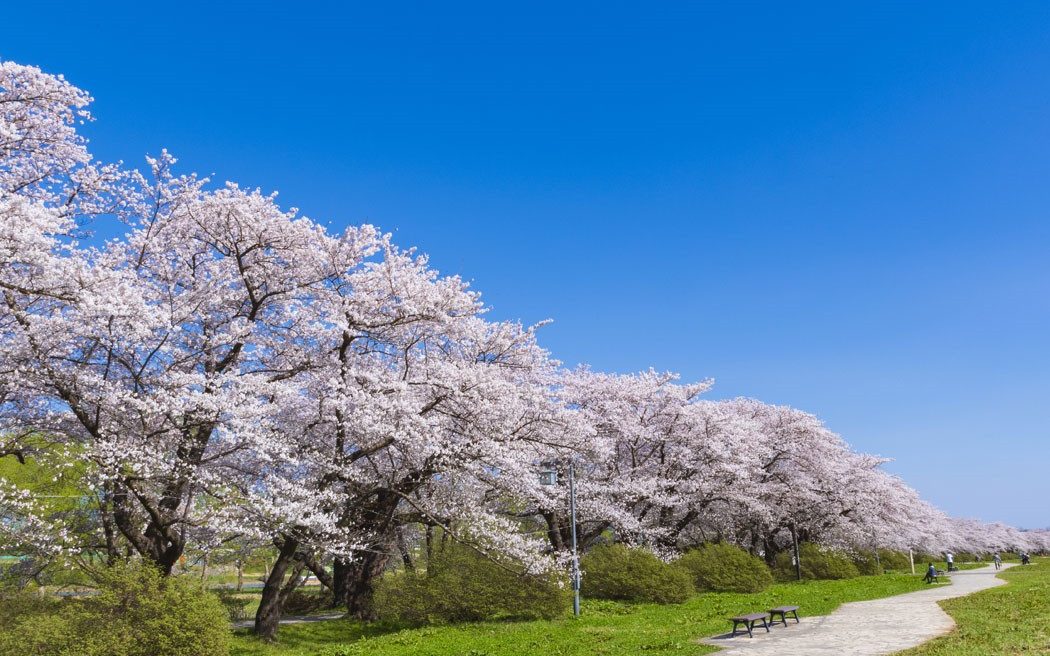
Kitakami Tenshokai, along with Hirosaki City in Aomori Prefecture and Kakunodate Town in Akita Prefecture, is known as one of the three great cherry blossom viewing spots in Mutsu. It attracts cherry blossom viewers from all over Japan. The cherry blossom planting project in the Tenjin-Chitai area started in the Taisho era and despite being damaged by floods, the beautiful scenery has been preserved thanks to the support of local residents.
In spring, cherry trees bloom along the Kitakami River about 2 kilometers from the foot of the Sangawa Bridge. Stroll along the leisurely flowing riverbank and through a cherry blossom tunnel composed of around 150 cherry blossom varieties. There are also walking spots such as the "Mutsu Folk Village" and the "Kitakami Yokokiwahi."
Cherry Blossom Type: Somei Yoshino Sakura
Number of Trees: Approximately 10,000
Lighting Time: To be determined
Crowd Level: Weekdays = Crowded, Holidays = Very crowded
3rd Place: Sakura Park Himekami (Iwate Prefecture) with approximately 10,000 trees
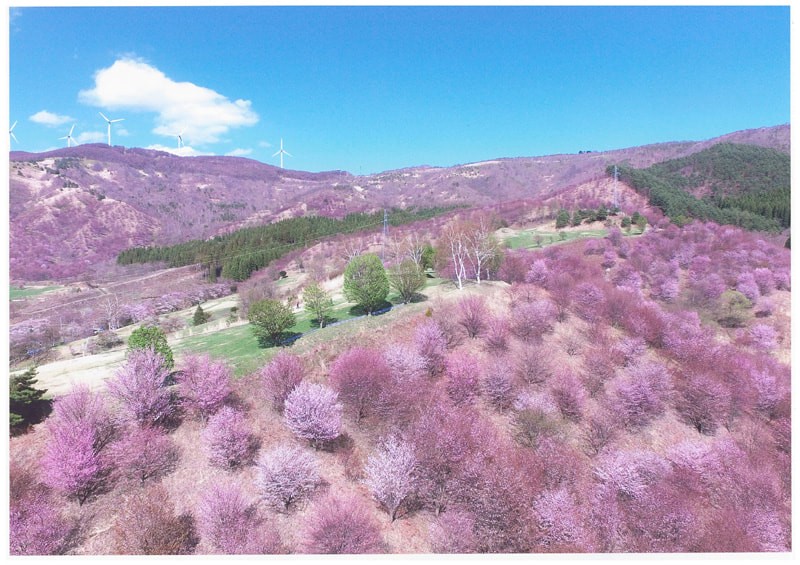
Sakura Park Himekami covers about 37 hectares, with around 10,000 Ooyama cherry trees competing to bloom, creating a magnificent cherry blossom spectacle. What sets Sakura Park Himekami apart is that it was founded by citizens with the goal of creating Japan's top cherry blossom viewing spot.
The "Hometown Tamayama Association" composed of residents from the former Tamayama Village donated around 10,000 Ooyama cherry tree seedlings. Over a period of two years from 1998 to 2011, the Hometown Tamayama Association and local residents donated these seedlings. About 20 years later, it has become one of the representative cherry blossom viewing spots in Iwate.
From the observation deck, you can see the magnificent view of Mt. Iwate. You can also enjoy cherry blossom varieties like Ooyama Sakura, Somei Yoshino Sakura, and drooping cherry blossoms.
Cherry Blossom Types: Ooyama Sakura, Somei Yoshino Sakura, Drooping Cherry Blossoms
Number of Trees: Approximately 10,000
Lighting Information: Not available
3rd Place: Sakurayama Park (Gunma Prefecture) with approximately 10,000 trees
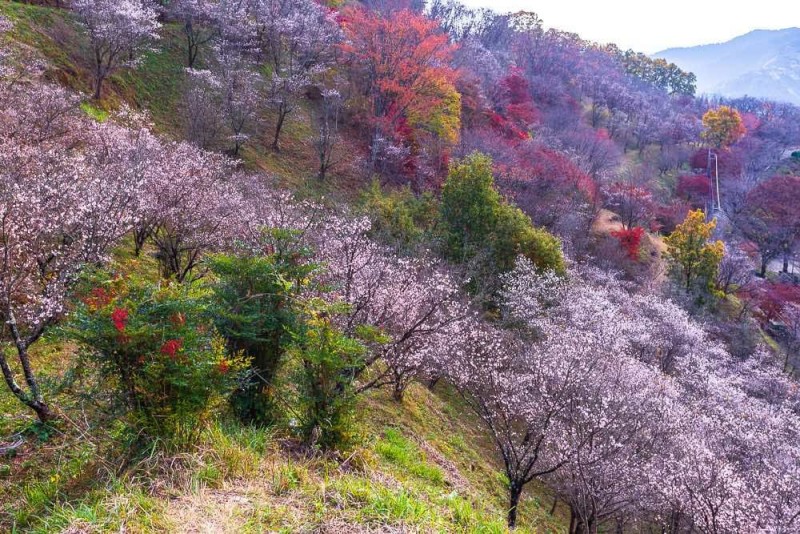
Sakurayama Park offers cherry blossom viewing opportunities twice a year, in spring and winter. In the local Hanafuda card game "Kamono Hanafuda," loved by the people of Gunma Prefecture, the "sa" card features "Fuyuzakura, which is famous along with Mitsuseki," referring to the winter cherry blossoms of Sakurayama Park.
The Fuyuzakura, also known as the Koyozakura, is a rare type of cherry tree that blooms twice. It produces beautiful flowers between November and December but keeps its buds closed until spring.
In spring, the Yoshino cherry trees in Sakurayama Park bloom, painting the entire mountain in a light pink hue. The Fuyuzakura has been designated as a national scenic area and natural monument.
Cherry Blossom Types: Somei Yoshino, Fuyuzakura
Number of Trees: Approximately 10,000
Illumination: Not available
Crowd Level: Weekdays = Spacious, Holidays = Slightly crowded
3rd Place: Takebe no Mori Park (Okayama Prefecture) with approximately 10,000 trees
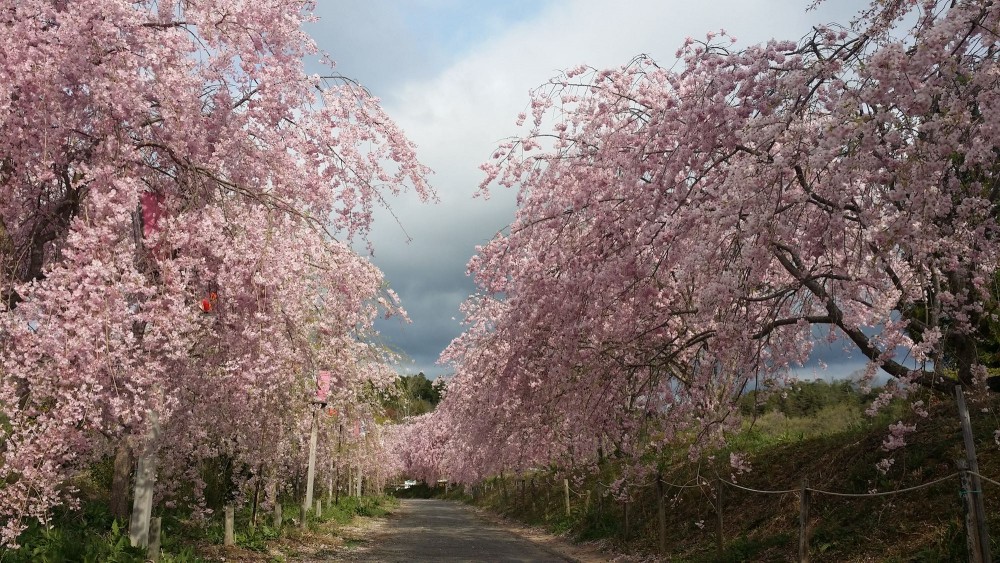
Takebe no Mori Park is a leisure park where you can experience the seasons and enjoy various activities, popular among the people of Okayama City as a recreational spot. The park boasts around 100 varieties and approximately 10,000 cherry trees, blooming gradually from late March to early May, offering a long period of cherry blossom viewing.
The highlight is the "Drooping Cherry Blossom Tunnel." Local volunteers, under the guidance of the 16th generation master of cherry blossoms from Kyoto, Sano Toshuemon, planted cherry trees along a 1.5-kilometer road, creating a magical space.
During the annual Hachioh Festival, local specialties are sold, and local performing arts are showcased.
Cherry Blossom Type: Yaegasaki Shidarezakura
Number of Trees: Approximately 10,000
Illumination: Not available
Crowd Level: Weekdays = Spacious, Holidays = Crowded
3rd Place: Ryuo-san Park (Yamaguchi Prefecture) with approximately 10,000 trees
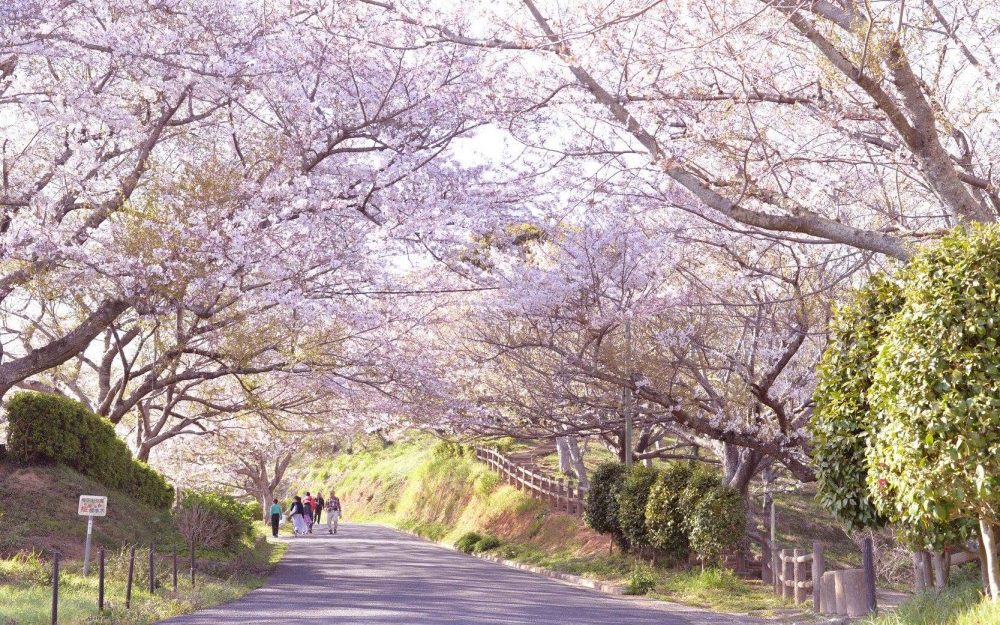
Ryuosan Park, located at the iconic Ryuo-san in Shunan City, boasts around 10,000 cherry trees. Situated on a hill overlooking the Seto Inland Sea, you can enjoy a 360-degree panoramic view of Shunan City, Kanmon Bridge, Shikoku, Kyushu, and the Eastern Peninsula from the observation deck.
This park is also renowned for its night views and sunrise, selected as one of the "50 Scenic Streets of Seto Inland Sea" and "Top 100 New Night Views in Japan." The cherry blossom season at Ryuo-san Park is from early to mid-April, with cherry blossoms covering the mountains like a carpet. An annual "Cherry Blossom Festival" is also held here.
Cherry Blossom Type: Somei Yoshino
Number of Trees: Approximately 10,000
Illumination: Information not available
Crowd Level: Weekdays = Slightly crowded, Holidays = Crowded
3rd Place: Ichibou Dam Lake (Kumamoto Prefecture) with approximately 10,000 trees
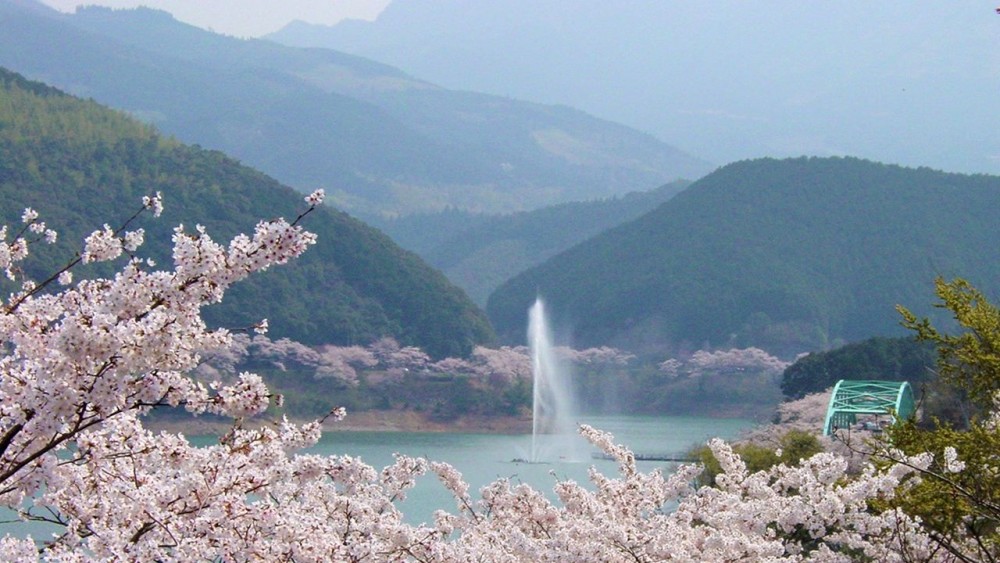
In the "Number One Cherry Blossom Village in Japan," Mizukami Village, you can enjoy the sight of around 10,000 cherry trees reflected on the surface of the lake. Ichibou Dam Lake is built on the Kuma River system, serving flood control, hydroelectric power generation, and irrigation purposes, but it is also renowned for its beautiful scenery with the backdrop of Mt. Ichibou. It has been selected as one of the "Top 100 Cherry Blossom Viewing Spots in Japan."
In spring, around ten thousand cherry trees bloom along the lakeside, turning the 13.4-kilometer dam lake road into a pink strip, attracting numerous visitors from within and outside the prefecture. Nearby, there is a cherry blossom encyclopedia where you can admire around 100 cherry blossom varieties including white, light pink, and deep red colors.
Cherry Blossom Type: Somei Yoshino
Number of Trees: Approximately 10,000
Illumination: From mid-March onwards (planned)
Crowd Level: Weekdays = Slightly crowded, Holidays = Very crowded
3rd Place: Hanadate Park (Miyazaki Prefecture) with approximately 10,000 trees
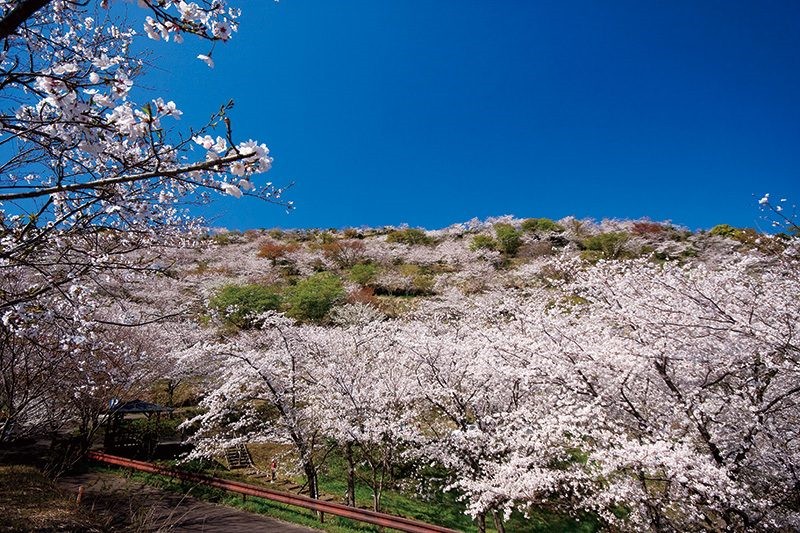
Hanadate Park is a naturally rich park located atop Mount Hanadate at an altitude of 489 meters. The spacious 20-hectare site features promenades and rest areas where people can enjoy walks and other activities.
The observation deck, offering views from the countryside of Kitagata-cho to the Pacific Ocean, is also popular. Approximately 10,000 Somei Yoshino cherry and wild cherry trees are planted in the park, blooming in spring. The best time to view cherry blossoms is from mid-March to early April, and the Hanadate Park Cherry Blossom Festival is held annually. You can also enjoy other spring flowers in the garden.
Cherry Blossom Type: Somei Yoshino
Number of Trees: Approximately 10,000
Lighting Time: To be determined
Crowd Level: Weekdays = Sparse, Holidays = Slightly crowded
